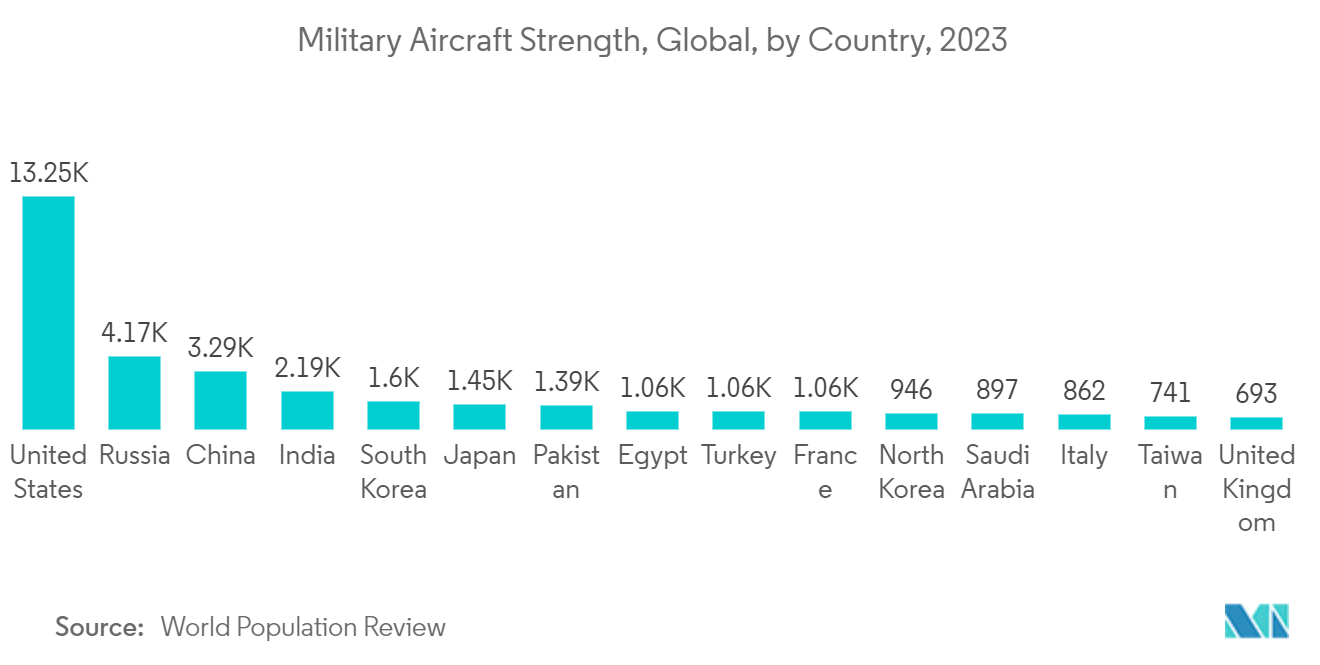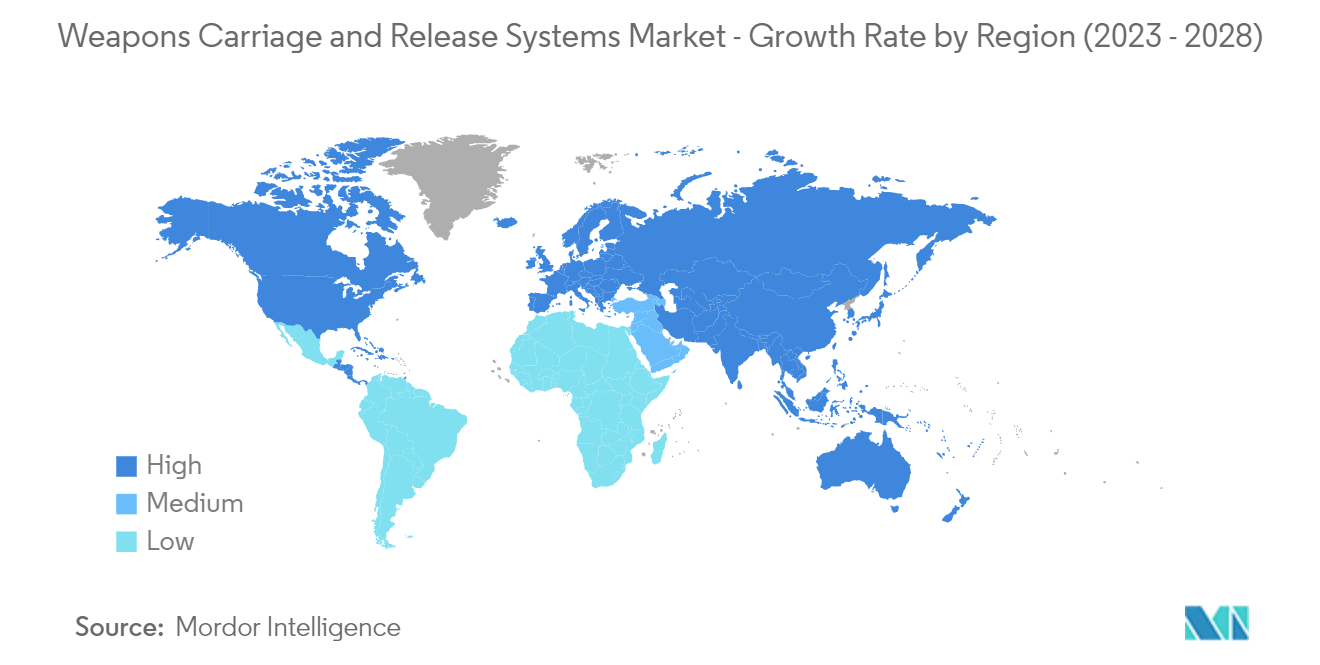Market Trends of Weapons Carriage And Release Systems Industry
Aircraft Platform to Dominate the Market
Several fleet modernization programs are underway globally in 2023. However, the aircraft fleet expansion and modernization programs contributed to a majority share of such undertaken initiatives due to their high induction rate and relatively higher pricing justified by their inherent sophisticated flight characteristics. The demand for weapon carriage and release systems is directly proportional to the rate of procurement of new combat aerial assets and the modernization of existing ones to increase their lethality. For instance, the Indian Ministry of Defence plans to acquire aircraft to cope with the depleting inventories of the Indian Air Force (IAF). As per the orders, the Indian Air Force will have 40 LCA Tejas fighter jets, 180 LCA Tejas Mark-1A fighter jets, and at least 200 Tejas Mark-2 jets by 2038. Besides, with new missiles being compatible with several aircraft programs, the weapons carriage and release systems are required to be designed accordingly. Such design features drive the growth prospects of the aircraft platform of the market in focus during the forecast period.

North America Dominates the Market in 2019
North America is estimated to account for the largest share of the weapons carriage and release systems market in 2023. The US has one of the most advanced fleets of aerial combat platforms at its disposal and is currently focusing on upgrading its existing fleets. Moreover, the country is a key exporter and consumer of such equipment globally, as it is home to some of the leading suppliers and integrators of weapons carriage and release systems. Between 2023 and 2022, the US enhanced its share of total arms exports from USD 7.5 billion to USD 14.5 billion. With potential adversaries such as Israel, Russia, and China fielding an increasingly diverse, expansive, and modern range of regional offensive missile systems that can threaten the aerial assets of the US forces, its allies, and partners, the US-based defence contractors are actively expanding and modernizing the capabilities of their aerial assets, thereby driving the demand for weapons carriage and release systems. The US indigenously developed the F-22, but due to certain limitations with designing a naval variant, the F-35 program was initiated. The biggest physical difference in the capabilities between the F-22 and the F-35 is their weapon bays. The weapon bay on the F-35 is deeper and narrower than that of the F-22 to carry heavier bombs meant for air-to-ground combat. As of June 2023, nearly 950 F-35s have been manufactured. The aircraft is expected to eventually replace a large number of US jet fighters such as F-16, F/A-18, A-10, F-117, and the Harrier. The F-35 aircraft has two internal weapons bays with two weapons stations each. The aircraft can use six external weapons stations for non-stealthy missions.

